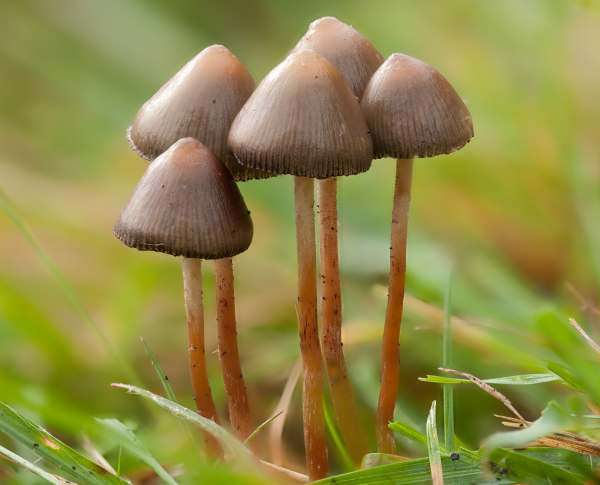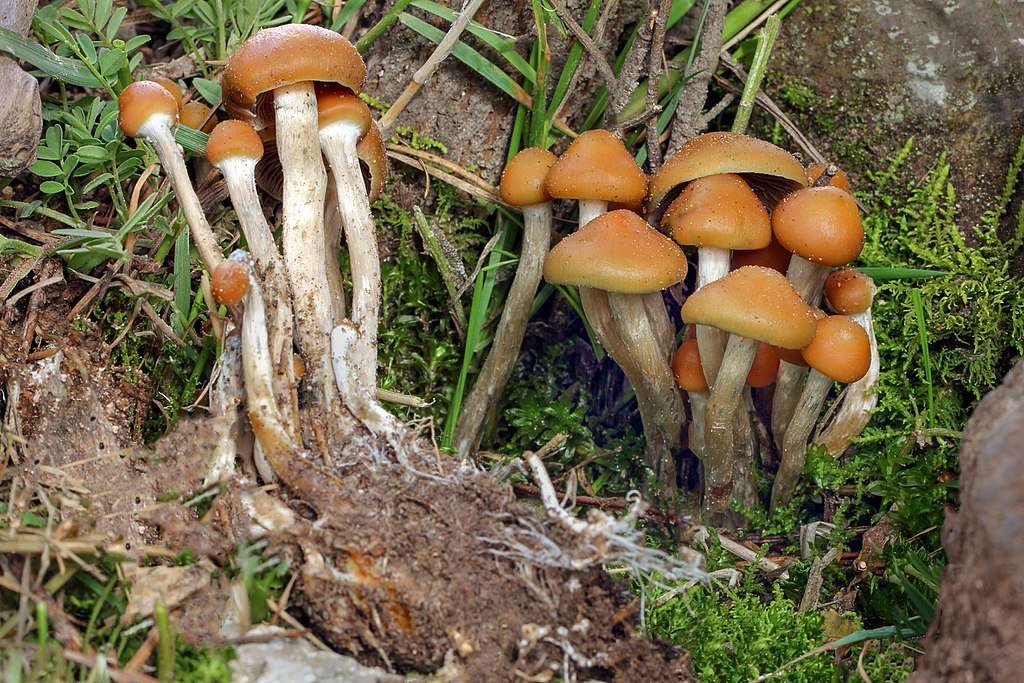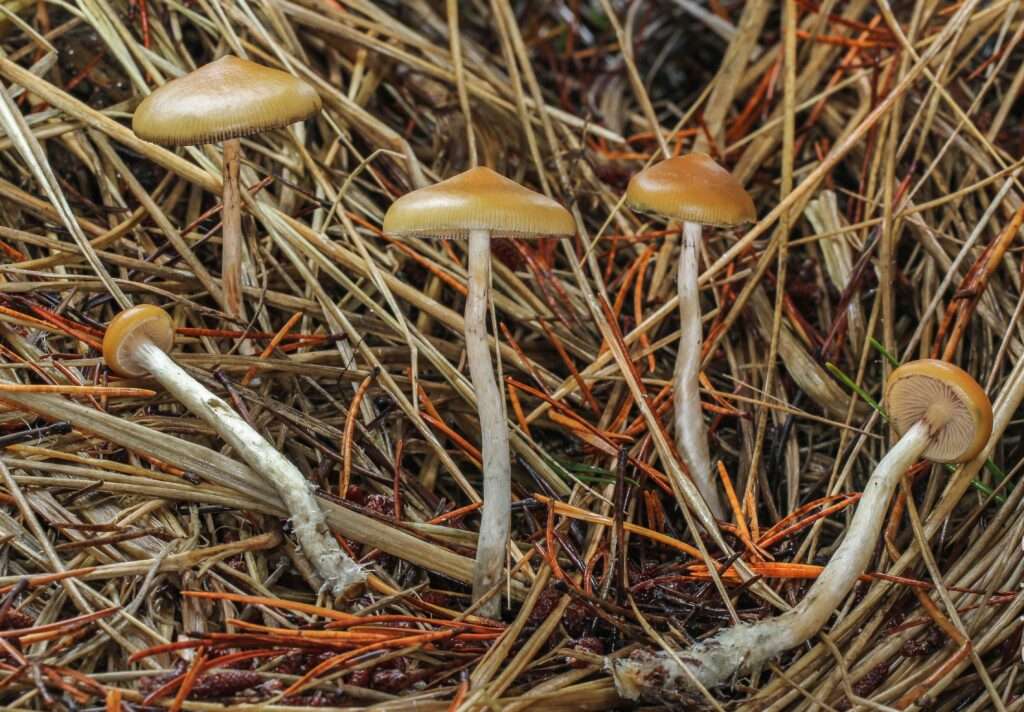
Scientific name
Armillaria mellea
Description
A honey mushroom is a delicate type of mushroom that has a golden honey-colored cap. The word “mellea” means honey because of this they have also named the honey mushroom. These mushrooms have a smooth cap that ranges in diameter from 3- 15 cm, is initially convex but eventually flattens out with a prominent umbo in the center, and eventually take on a dish-like form. When matured, the cap’s borders are frequently arched, and when it’s moist, its surface is slimy and sticky. Although this fungus is normally honey-colored, it can occasionally have a few black, hairy scales in the center that are organized slightly radially. The gills are large and relatively distant, initially white, occasionally turning pink-yellow and discolored with age. Gills are linked to the stem at 90 degrees angles, or they may be somewhat decurrent.

The stem of this mushroom is about 20 cm in length and 3- 4 cm in diameter, although its length varies. The stem is fibrillose and initially has a hard spongy texture before becoming hollow. It is spherical and thinned to the base. It frequently has a very black base and is white at the top end and brown-yellow from the lower side. The upper portion of the stem is linked by a wide, continuous ring that resembles skin. When immature, this stretches outward as a white-colored veil shields the gills. They have a velvety edge and golden fluff below. The flesh of the honey mushroom cap is white and has a pleasant aroma with a bitter taste.
Habitat
A honey mushroom is endemic to temperate regions of the Northern Hemisphere. It is mostly found growing in hardwoods, dead or living woods, and open spaces. They preferably grow on moist soil. They can also be found in gardens, vineyards, parks, natural landscapes, and forest areas.
Uses/Importance
Honey mushrooms can help the immune system continue to function at its best. It helps in activating macrophages, natural killer cells, and interleukins. They are rich sources of polysaccharides and have potent immune-stimulating properties. These polysaccharides have been shown to improve cognition and guard against neurological disorders.
Honey mushroom is pathogenic for plants and a member of a group of cryptic mushroom species that are morphologically related to one another. In many plant species, it promotes Armillaria root rot. Infected trees show signs of the disease in the form of dying limbs, restricted growth, and discoloration of the foliage. Although mushrooms can be eaten, some people may have a sensitivity to them. The mycelium of this mushroom can produce light through bioluminescence.
Table





